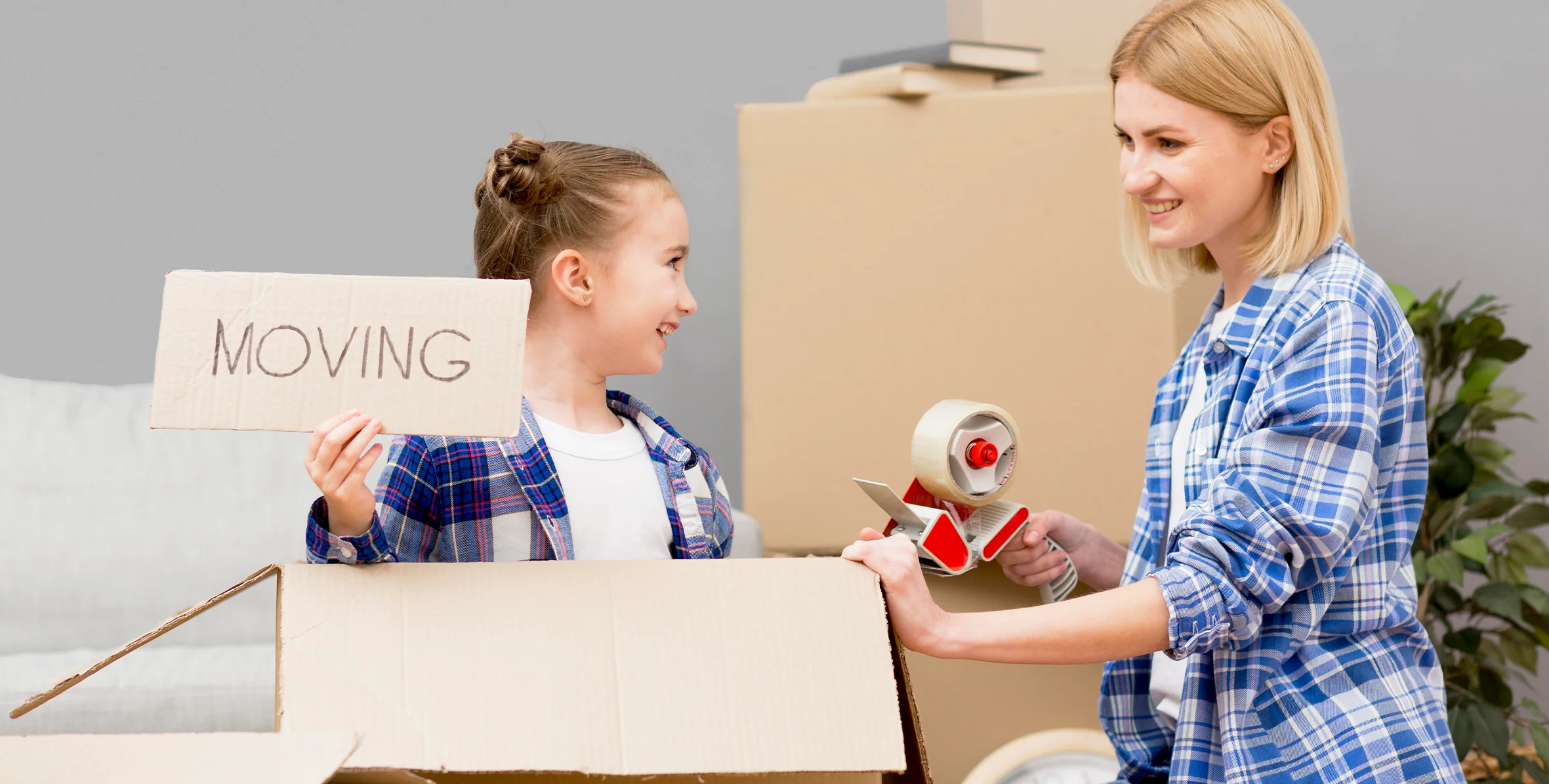Change is hard at first, messy in the middle, and gorgeous at the end.
If you’ve ever packed your life into boxes, you already know that moving isn’t just about trucks, tape, and cardboard. It’s about emotions, sometimes a whole storm of them.
In fact, studies show that 44% of Americans say moving is one of the most stressful life events they’ve ever experienced. That’s why learning how to emotionally prepare for a big move is just as important as planning the logistics.
And no matter how excited you might be about the new life, it’s completely normal to feel anxious, overwhelmed, or even a little homesick before you’ve left. Many people admit that they struggle to cope emotionally with relocation, whether it’s the thought of leaving behind familiar places, the pressure of packing, or simply not knowing what life will look like on the other side.
That’s why getting yourself ready mentally before a move can make the change smoother and less stressful.
Let’s discuss, “How do you actually get through this move without falling apart?”
Moving often feels heavier than just the physical act of packing boxes and loading a truck; it’s an emotional experience that touches almost every part of your life.
Psychologists explain that relocation is classified as a major life transition, which means it naturally comes with stress, uncertainty, and a sense of loss.
But why does it feel so overwhelming for so many people?
 Follow these steps and make yourself emotionally prepare for a big move:
Follow these steps and make yourself emotionally prepare for a big move:
One of the first ways to cope emotionally with relocation is to admit that it’s okay to feel a mix of things. You might be thrilled one moment and crying the next. That doesn’t mean you’re not ready; it means you’re human.
A few ways to acknowledge and release emotions:
Pro tip: Keep a running list of what excites you about the move. Balance the good with the hard.
Experts say that mental preparation for moving house often makes or breaks the emotional experience. Instead of waiting until the last week, start early:
Practical checklists are common, but an emotional moving checklist is just as important. Here’s a sample:
| Emotional Moving Checklist | Why It Helps |
| Journal daily for 10 minutes | Clears your head and processes feelings |
| Schedule 3–5 goodbyes | Brings closure and reduces regret |
| List top 5 things you’re excited about | Builds positive anticipation |
| Keep a self-care kit (snacks, playlist, candle) | Comforts you during transition |
| Plan first week activities in the new place | Creates stability and routine |
Moving isn’t just about leaving; it’s about closing one door before opening another. Research shows that people who have intentional goodbyes adjust faster after relocating.
Ways to do this:
Closure makes the transition smoother and reduces the emotional hangover of things left unsaid.
Here’s the reality: moving day is hectic. But you can deal with moving anxiety by prepping for it like a marathon.
A recent Zillow survey found that over 50% of movers experience extreme stress during the actual moving week.
The first two days set the tone. Instead of trying to do everything, focus on these three things:
This approach helps you feel grounded while your brain is adjusting.
Adjusting takes longer than people expect. According to moving industry reports, most people take 3–6 months to feel settled after relocation. That’s why patience is key.
Tips for the first month:
Loneliness can creep in fast after a move. To fight it:
Remember, you don’t have to make “best friends” right away—small connections add up.
Homesickness is natural. It’s not weakness—it’s your brain adjusting to change.
What works:
 Even with the best preparation, sometimes moving stirs up more than just temporary stress. For many people, it can trigger deeper emotional struggles that don’t fade after the boxes are unpacked.
Even with the best preparation, sometimes moving stirs up more than just temporary stress. For many people, it can trigger deeper emotional struggles that don’t fade after the boxes are unpacked.
Here are a few signs that it might be time to reach out for extra help:
According to the American Counseling Association, major life changes like relocation can sometimes uncover hidden emotional challenges. Reaching out for help isn’t a sign of weakness; it’s a proactive step toward protecting your mental health.
Things People Forget to Do Before Moving Day
DIY vs. Professional Movers – What’s Best for Your Budget?
What Is the Cheapest Time of Year to Move Smartly?
Essential Post-Move Cleaning Checklist for Your New Home
Most people take about three to six months to feel emotionally settled in a new place, though it can vary. Creating routines, staying connected with old friends, and building small habits in the new environment can speed up the adjustment process.
Feeling sad after a move is often linked to homesickness and the loss of familiarity. You’re leaving behind routines, relationships, and comfort zones. This sadness usually improves as you build new connections and create a sense of belonging in your new home.
Break the process into smaller steps. Focus on one task at a time, like packing one room or setting up utilities. Using an emotional moving checklist and practicing self-care can also reduce the sense of overwhelm.
Yes, it’s normal to experience “relocation regret,” especially in the first few weeks. This often comes from missing what’s familiar. Give yourself time—most regrets fade as you adjust, meet new people, and start to enjoy the benefits of your new environment.
Talk openly with them about the changes, keep familiar routines where possible, and involve them in decisions like decorating their room. Kids adjust faster when they feel heard and included in the process.